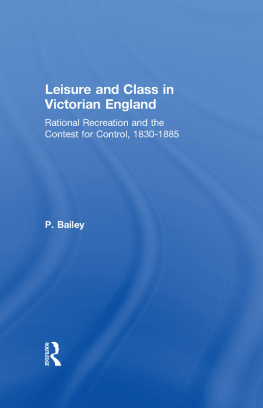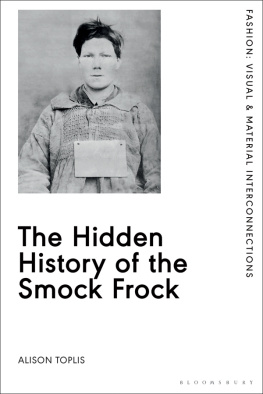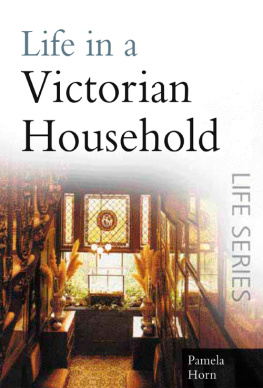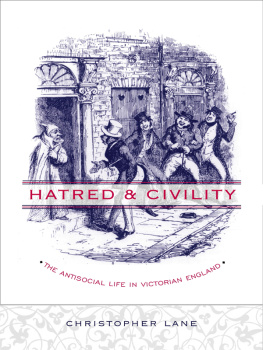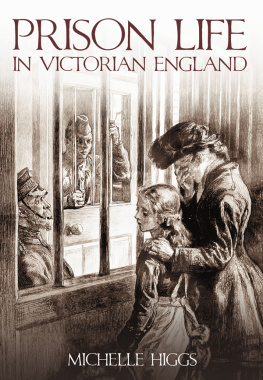Rachel Worth is Professor of History of Dress and Fashion at the Arts University Bournemouth. She is the author of Dress & Textiles (2002), Fashion for the People: A History of Clothing at Marks & Spencer (2006) and Fashion and Class (2018).
There is a great deal of original evidence and analysis here, as well as insights into the often-contradictory impulses at play within Victorian art and literature in its depiction of ways country people dressed. It is particularly fascinating to read about the symbolic and mythic status of landscape over this period, and to have dress foregrounded as a crucial element within both debates about and visualisations of the countryside during a time of rapid industrialisation.
Rebecca Arnold, Oak Foundation Senior Lecturer in History of Dress & Textiles, The Courtauld Institute of Art
I was lucky enough to see this volume when it was little more than a pattern; when the authors initial ideas were being measured against a complex fabric of historic artefacts, period photographs, and other archival sources from the Museum of English Rural Life and elsewhere. The finished monograph holds nothing back. It goes great lengths to capture the complexity of the period under investigation, delivering through its outerwear a balanced and detailed sense of the many changes to the countryside that occurred during this time. A multifaceted and nuanced narrative underlies these robust garments. The text deftly and expertly contrasts and explores the layers of social hierarchy, cultural influence, economic reality, and material uncertainty that make this such a compelling field for investigation. For my own part, as a curator and interpreter of rural material culture, it offers a reference text that is both subtle and challenging, and one that confronts the enduring paradox of apparently precious collections that are comprised of seemingly unimportant, disposable, and outmoded things. Not unlike the smock-frocks it so carefully unpicks, this volume is a hard-wearing must for the specialist and an accessible way in for those trying on the English countryside for the very first time.
Oliver Douglas, Curator of Collections, Museum of English Rural Life, University of Reading

Published in 2018 by
I.B.Tauris & Co. Ltd
London New York
www.ibtauris.com
Copyright 2018 Rachel Worth
The right of Rachel Worth to be identified as the author of this work has been asserted by the author in accordance with the Copyright, Designs and Patents Act 1988.
All rights reserved. Except for brief quotations in a review, this book, or any part thereof, may not be reproduced, stored in or introduced into a retrieval system, or transmitted, in any form or by any means, electronic, mechanical, photocopying, recording or otherwise, without the prior written permission of the publisher.
Every attempt has been made to gain permission for the use of the images in this book. Any omissions will be rectified in future editions.
References to websites were correct at the time of writing.
ISBN: 978 1 78453 396 0
eISBN: 978 1 78672 345 1
ePDF: 978 1 78673 345 0
A full CIP record for this book is available from the British Library
A full CIP record is available from the Library of Congress
Library of Congress Catalog Card Number: available
C O NTENTS
ILLUSTRATI O NS
BLACK-AND-WHITE ILLUSTRATIONS
Mrs Hall, Newhaven (18437) by David Octavius Hill (180270) and Robert Adamson (182148). Private Collection. The Stapleton Collection. Bridgeman Images.
Fishermen Ashore (c.18437) by David Octavius Hill (180270) and Robert Adamson (182148). Victoria and Albert Museum, London. The Stapleton Collection. Bridgeman Images.
Village News (1889) by Joseph Gale (18301906). Kodak Collection. Science and Society Picture Library.
Bringing Home the May (1862) by Henry Peach Robinson (18301910). Royal Photographic Society. Science and Society Picture Library.
The Cuckoo (c.1900) by Henry Peach Robinson (18301910). Royal Photographic Society. Science and Society Picture Library.
When the Days Work is Done (1877) by Henry Peach Robinson (18301910).
Coming Home from the Marshes (1886) by Peter Henry Emerson (18561936). Royal Photographic Society. Science and Society Picture Library.
Series of snapshots by George Clausen (18521944). Sir George Clausen Collection, Museum of English Rural Life, University of Reading. 11521
White linen smock. Museum of English Rural Life, University of Reading (cat. no 56/295).
Detail of linen smock. Museum of English Rural Life, University of Reading (cat. no 56/295).
Leather boots. Museum of English Rural Life, University of Reading (cat. no 53/642).
Hob-nailed boot (sole). Museum of English Rural Life, University of Reading (cat. no 53/642).
Detail of oiled smock. Museum of English Rural Life, University of Reading (cat. no 90/19).
Detail of white linen smock. Massingham Collection. Museum of English Rural Life, University of Reading (cat. no 51/258).
Drabbet smock. Museum of English Rural Life, University of Reading (cat. no 68/24).
Detail of drabbet smock, showing side seam roughly sewn together. Museum of English Rural Life, University of Reading (cat. no 68/24).
Detail of hand-smocking and embroidery on a white linen smock. Museum of English Rural Life, University of Reading (cat. no 55/780).
Detail of a hand-stitched side seam and hem on a white linen smock. Museum of English Rural Life, University of Reading (cat. no 55/780).
Billycock hat (second half of the nineteenth century). Museum of English Rural Life, University of Reading (cat. no. 55/92).
Coat purportedly bought from a Hampshire shepherd in 1914. Museum of English Rural Life, University of Reading (cat. no 74/4).
Detail of coat showing lining and inside pocket. Museum of English Rural Life, University of Reading (cat. no 74/4).
Pair of pattens (nineteenth century). Museum of English Rural Life, University of Reading (cat. no 51/33).
COLOUR PLATES
The Farmers Children (pencil and watercolour on paper) by Robert Hills (17691844). Private Collection. Photo Agnews, London. Bridgeman Images.
A Rustic Scene (1823; pen and brush in sepia) by Samuel Palmer (180581). Ashmolean Museum, University of Oxford. Bridgeman Images.
Washing Day at Sandhills, Witley (watercolour on paper) by Helen Allingham (18481926). Private Collection. Bourne Gallery, Reigate, Surrey. Bridgeman Images.
A Dorsetshire Cottage (watercolour on paper) by Helen Allingham (18481926). Private Collection. Photo Chris Beetles Ltd, London. Bridgeman Images.
Portrait of a Girl in a Pink Bonnet (watercolour on paper) by Helen Allingham (18481926). John Spink Fine Watercolours, London. Bridgeman Images.
Washing Day (pencil and watercolour) by Helen Allingham (18481926). Private Collection. Photo Christies Images. Bridgeman Images.
The Shepherd (oil on canvas) by Henry Herbert La Thangue (18591929). Private Collection. Photo Peter Nahum at The Leicester Galleries, London. Bridgeman Images.
December (c.1882; oil on panel) by George Clausen (18521944). Private Collection. Bridgeman Images.
The Stone Pickers (1887; oil on canvas) by George Clausen (18521944). Laing Art Gallery, Newcastle-upon-Tyne. Tyne & Wear Archives & Museums. Bridgeman Images.


